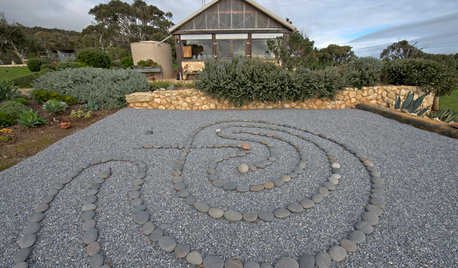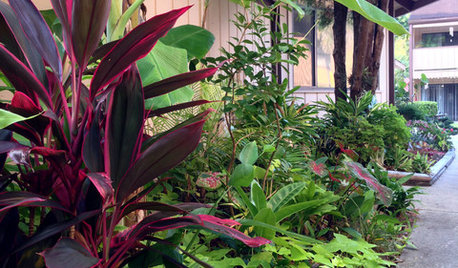Rabbit Manure Question
cmpman1974
17 years ago
Related Stories

GARDENING GUIDESThe Poop Scoop: Enrich Your Soil With Good Old Manure
Get over the ick factor already — this natural super-ingredient for soil has so many benefits, you'll wonder why you ever went chemical
Full Story
DOORS5 Questions to Ask Before Installing a Barn Door
Find out whether that barn door you love is the right solution for your space
Full Story
GARDENING GUIDESNo-Regret Plants: 5 Questions Smart Shoppers Ask
Quit wasting money and time at the garden center. This checklist will ensure that the plants you're eyeing will stick around in your yard
Full Story
FUN HOUZZHouzz Quiz: What's Your Decorating Style?
Answer these 9 questions to find out what decorating style suits you best
Full Story
STUDIOS AND WORKSHOPSStep Inside a Stunning Nature-Inspired Sanctuary in South Australia
An Aussie artist lets the natural coastal landscape dictate the design of her creative retreat
Full Story
GARDENING GUIDESLush, Foodie Abundance in a Small Urban Garden
This modest backyard garden provides its owner with fruit and vegetables all year round, thanks to an innovative low-maintenance approach
Full Story
GARDENING GUIDESA Mom, a Garden and a Gift for the Neighbors
Gardening can be therapeutic in unexpected ways. See how one gardener found peace and purpose in a patch of Florida soil
Full Story
GARDENING GUIDES10 Easy Edibles for First-Time Gardeners
Focus on these beginner-friendly vegetables, herbs, beans and salad greens to start a home farm with little fuss
Full Story
REMODELING GUIDESWhich Window for Your World?
The view and fresh air from your windows make a huge impact on the experience of being in your house
Full Story
HOME TECHNew Strategies for Hiding the TV
Its easy to be discreet when you've got cabinets, panels and high-tech TV hiders like these
Full StoryMore Discussions






phoenix7801
Kimmsr
Related Professionals
Ballwin Landscape Architects & Landscape Designers · Cockeysville Landscape Contractors · New Berlin Landscape Contractors · North Chicago Landscape Contractors · Wallingford Landscape Contractors · Watertown Landscape Contractors · Wethersfield Landscape Contractors · Welby Decks, Patios & Outdoor Enclosures · Estero Decks, Patios & Outdoor Enclosures · Frisco Decks, Patios & Outdoor Enclosures · Gladstone Decks, Patios & Outdoor Enclosures · Huber Heights Decks, Patios & Outdoor Enclosures · Medford Decks, Patios & Outdoor Enclosures · Windsor Decks, Patios & Outdoor Enclosures · Scotts Valley Decks, Patios & Outdoor Enclosuresmommagoose
melonhedd
owllady
pablo_nh
harvey_gardner
pablo_nh
darkcloud
harvey_gardner
gardengal48 (PNW Z8/9)